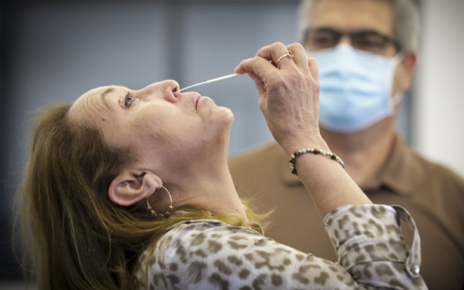Pregnancies can be terrifying to mother-to-be especially for the first time. There are many things that a woman wants to do to ensure they have a healthy pregnancy and birth. Health screening is important for women to know if they are generally in good health and condition to bear a child. There are many tests or examinations done in a pregnant woman to evaluate the pregnancy. One of the tests used during pregnancy is check-up cordocentesis. Throughout this article, we will learn about cordocentesis.
To better understand what cordocentesis is, it would be best to know a bit more on the human part associated with the procedure, which is the umbilical cord. In pregnancy, the umbilical cord plays a major role. It connects the placenta with the fetus or baby in the womb. When a baby is still in the womb, the umbilical cord is the one supplying oxygen and nutrients from the mother to the baby for survival and growth. At the same time, it also removes the waste products from the baby before it is eliminated through the mother’s body. The umbilical cord will be cut when the baby is born, leaving only a short piece known as stump that is still attached to the baby’s belly button This stump will naturally shrink and fall within weeks after birth.
Cordocentesis is a procedure that evaluates the blood from the fetus. It is known as a diagnostic test as it helps to examine for possible fetal abnormalities. It is also known as percutaneous umbilical cord blood sampling (PUBS). This procedure is typically done in the second or third trimester of pregnancy. While it is true that PUBS is mostly known for fetal sampling, there are also reports on its uses for delivering medications to fetus and intrauterine transfusion (delivering red blood cells from donor to the fetus).
Cordocentesis is performed using a thin needle inserted through the abdomen and the uterine wall. It is usually guided with ultrasound to get a better view of where the umbilical cord is. Insertion of the needle then collects a small sample of blood. Cordocentesis should not be confused with amniocentesis as the procedure relatively seems similar. In amniocentesis, what is collected is the amniotic fluids and not blood and the needle is directed into the uterine cavity and through the amniotic sac capsulating the fetus.
You may wonder why a person would be needing cordocentesis. Cordocentesis is commonly indicated for detecting foetal abnormalities. Cordocentesis detect chromosome abnormalities or possible genetic problems that could be causing fetus abnormalities. It is also used to detect possible blood disorders such as haemolytic anaemia or thalassemia by analysing the baby’s immunity or the mother’s antibody. Other indications include detecting infections in pregnancy such as cytomegalovirus. There can be a number of indications for cordocentesis. Please talk to your doctor if you are unsure why you need to undergo this procedure.
Even though cordocentesis is generally a safe procedure, similar to many other procedures that are invasive using needles, there will always be risk and possible complications. The risk that could be a concern is miscarriage which can occur 1 to 2 times out of 100 procedures. There is also risk for blood loss resulting from the puncture site and chances for infections. Slower heart rate in babies may occur around 5% of the total procedure. Rest assured, all of these risks and complications are uncommon and when done by experienced health experts, both mother and baby should be in safe hands. If a patient experiences symptoms such as fever, chills, feeling sick and leaking suspected amniotic fluid following a cordocentesis procedure, the patient should contact their doctor immediately.
Cordocentesis is indeed important in certain cases due to the fact that it can provide information of possible medical interventions needed to improve pregnancy outcome, for patients to start making lifestyle changes and for couples or mothers to get further support or resources needed to have a safe pregnancy. It is worth noting that cordocentesis procedure is often offered when there is no other way or procedure available. This is true when many of the new procedures such as cytogenetic techniques are less invasive. Thus, cordocentesis can only be used when there are great indications.
It can be concluded that cordocentesis is a procedure of obtaining blood from the umbilical cord. This procedure is usually done during the second or third trimester. There are many indications for the procedure. Since there are other techniques that are less invasive and pose low risk for the fetus, cordocentesis is rarely done as a diagnostic procedure. However, cordocentesis is still a great choice in cases such as blood transfusion to fetus and detecting possible blood disorders. Pregnant women attend all appointments or follow-up during pregnancy to ensure their pregnancy journey will be smooth and healthy.





